Confectionary and Beverages
Applying alginate to confectionery making can increase the volume of dough, improve the elasticity and stabilization of air bubbles. It has a long reputation as a stabilizer for frozen confectionary and has also been found to be effective in improving texture and heat shock resistance. In beverages, it is used as a stabilizer to prevent the precipitation of lactic acid proteins or as a thickener to give fruit juice beverages a thick consistency.
Applications and effects
※Alginic acid and all products derived from it are collectively called Alginate. Please note the correct product name for each application.
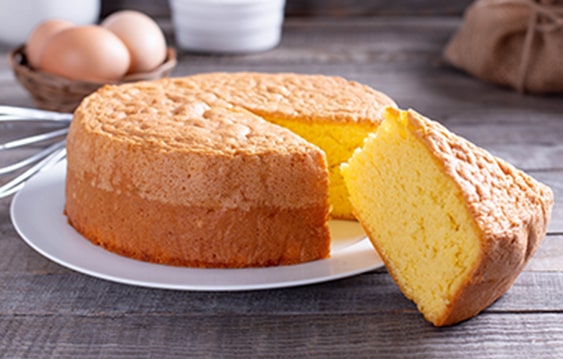
Sponge cakes
Gives good texture and improves volume.
![]()
![]()

Sponge cakes have weak bonds in the dough resulting in uneven bubbles in the inner phase after baking, which may result in a dry and fragile texture. When alginate is added, bubbles in the inner phase of the sponge become small and uniform, resulting in a soft and moist mouth-melting texture. In addition, the overall volume of the sponge will be increased by strength of the dough.
- 【Alginate to be used】
- Propylene Glycol Alginate
- 【Recommended dosage】
- 0.1~0.5% against flour
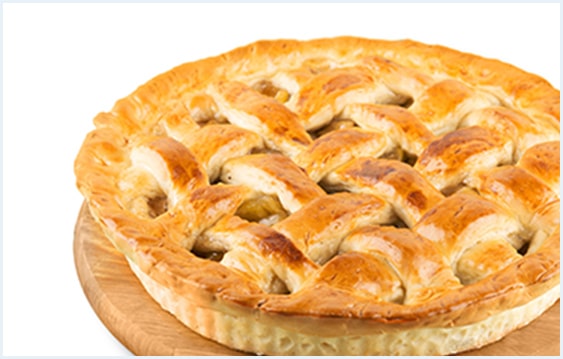
Frozen pies
Swells well and is crispy.
![]()
![]()

Fast-maturing pie dough, made by a rapid method, is less likely to form a pie layer when frozen as the dough layer collapses. When alginate is added to the frozen pie dough, each dough layer has regular and consistent voids, and the pie rises well after baking. In addition to a crispy texture, the dough layer has increased strength and rises throughout, improving yield. Since dough stretching is improved, the working efficiency of kneading is also improved.
- 【Alginate to be used】
- Propylene Glycol Alginate
- 【Recommended dosage】
- 0.1~0.5% against flour

Whipped cream
Increase bubble stabilization time and reduce syneresis.
![]()
![]()

As the temperature of whipped cream increases, the air bubbles break and cause "sagging", or the shape of whipped cream collapses due to water syneresis, resulting in a deterioration of appearance. The alginate added to fresh cream forms a soft gel by reaction with the calcium in the milks, stabilizing the bubbles in the whipped cream. As a result, the cream's shape retention can be maintained for longer. In addition, the gel formed in the whipped cream will retain moisture, so water release from the cream is reduced.
- 【Alginate to be used】
- KIMICA ALGIN M806
- Whipped cream
- 【Recommended dosage】
- 0.2~0.6% of total amount
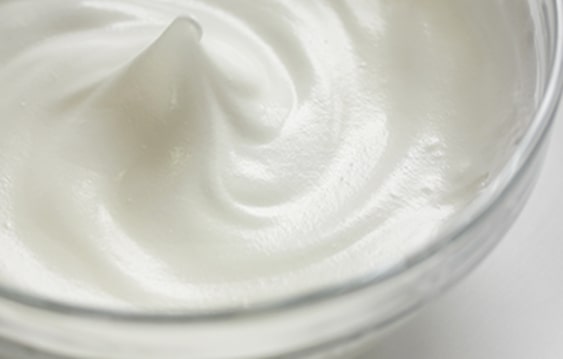
Meringues
Fine and stabilized foams.
![]()
![]()

Alginate acts on the protein of egg white to strengthen the membrane of the bubble, creating a strong and stabilized foam. It shortens the time to whisk meringue and produces a smooth meringue while maintaining a stiff peaked foam. Alginate can produce stable quality meringue without being influenced by the freshness of egg white or variation in raw egg components, with a creamy appearance and maintaining a smooth texture for longer.
- 【Alginate to be used】
- Propylene Glycol Alginate
- 【Recommended dosage】
- 0.1~0.5% of total amount
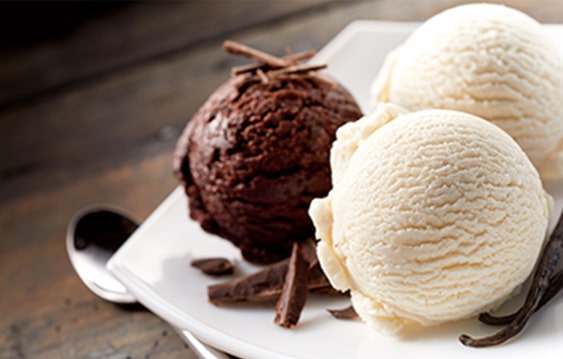
Ice cream
Better aeration, melt in the mouth and yield is improved.
![]()
![]()

Ice cream is one of the oldest food applications using alginate. The alginate blend mix increases viscosity slightly, maintains bubble aeration and improves ice cream overrun. Ice creams with high overruns have good mouthfeel and improved production yield. In addition, alginate added to the mix reacts with calcium in the milk to form a heat resistant gel network in the ice cream. As a result, the ice cream is hard to melt, does not decrease in weight and is highly heat-shock resistant.
- 【Alginate to be used】
- KIMICA ALGIN M301, KIMICA ALGIN M502, KIMICA ALGIN M702
- Ice cream
- 【Recommended dosage】
- 0.1~0.5% of total amount

Fruit juices
Improves mouthfeel by having a thick consistency and also suppresses solids sedimentation.
![]()
![]()

By adding alginate to a fruit juice drink, it produces a beverage with a thick, rich consistency and improves the texture. In addition, it can suppress the precipitation of solids suspended in beverages, such as pulp components derived from raw materials.
- 【Alginate to be used】
- Propylene Glycol Alginate
- 【Recommended dosage】
- 0.5~1.0% of total amount
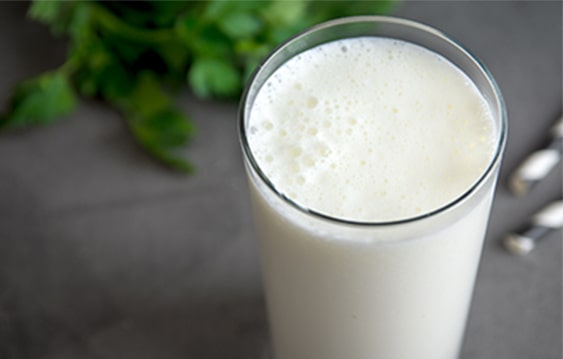
Lactic acid beverages
Prevents aggregation and sedimentation of milk proteins, creating a stable dispersion.
![]()
![]()

Alginate is also effective as a stabilizer in lactic acid beverages. When an alginate solution is added to a lactic acid beverage homogenization occurs, alginate molecules stick to the surface of the acidic lactic protein particles, compensating for the electrostatic repulsion between the particles, and the macromolecular structure of alginate sterically hinders the access of milk proteins to each other.
As a result, it prevents milk proteins from aggregating and precipitating during the storage of lactic acid beverages and it is possible to maintain a stable dispersion state for a longer period of time. Comparison with pectin shows that the amount of alginate needed to prevent precipitation of milk proteins is about half the pectin amount.
- 【Alginate to be used】
- Propylene Glycol Alginate
- 【Recommended dosage】
- 0.1~0.8% of total amount
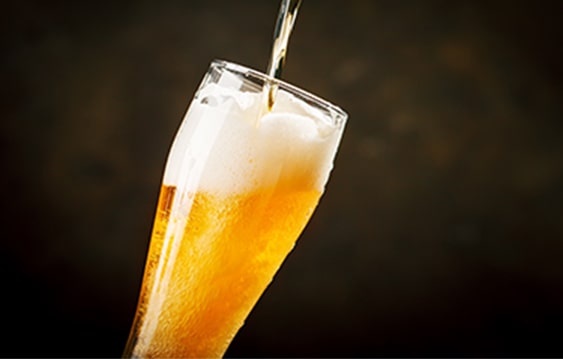
Beer
Produces a fine stabilized foam.
![]()
![]()

Alginate is highly effective as a foam stabilizer for beer and has been utilized for many years, mainly in breweries in Europe and South America. Alginate reacts on foam proteins, the main component of beer bubbles, to reinforce the foam membrane, while slowing down the flow rate of the liquid and increasing foam retention time.
Although the dosage in beer is very small, only a few tens of ppm. the amount of alginate consumed in beer applications is many hundreds of tons per year due to the large beer production volume.
- 【Alginate to be used】
- Propylene Glycol Alginate
- 【Recommended dosage】
- 40~80ppm of total amount